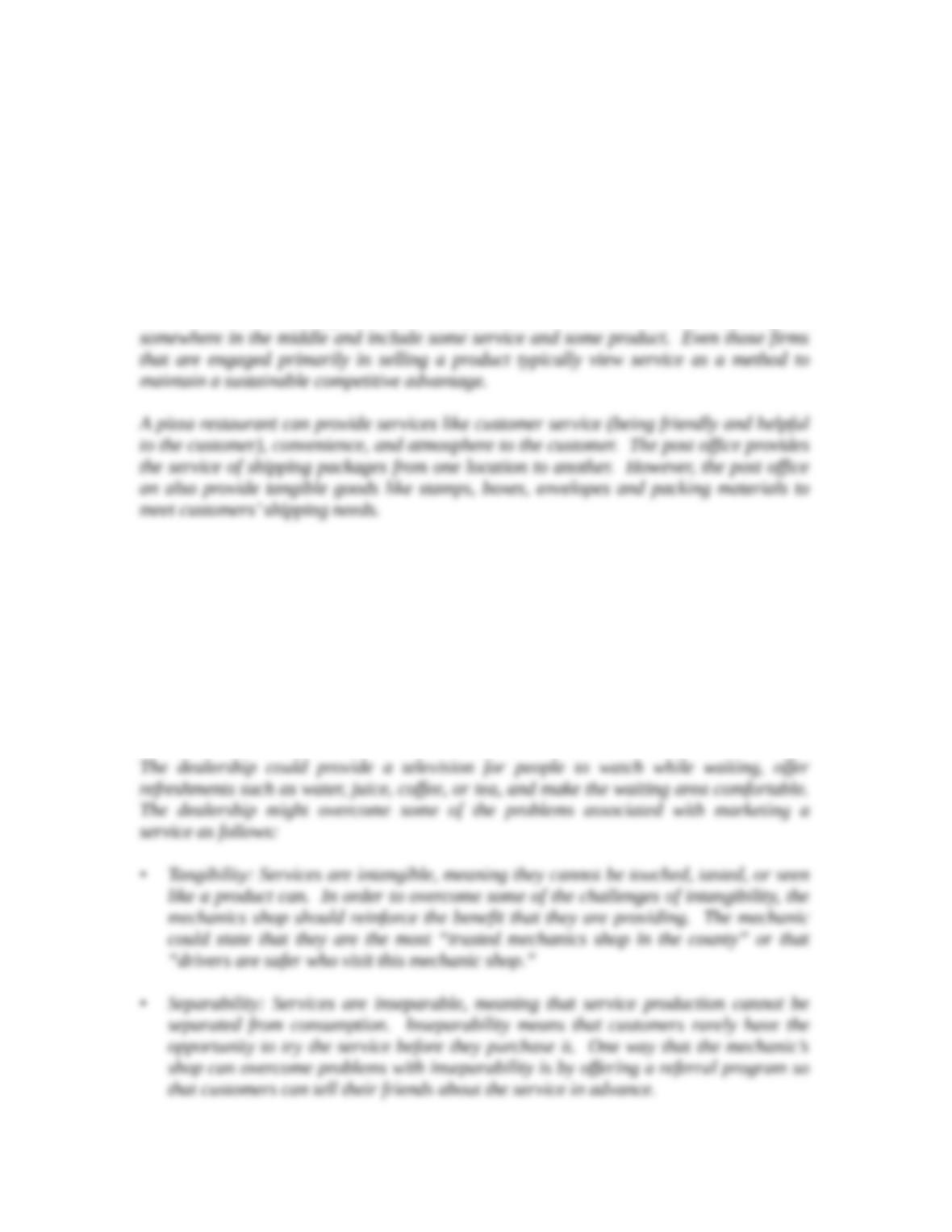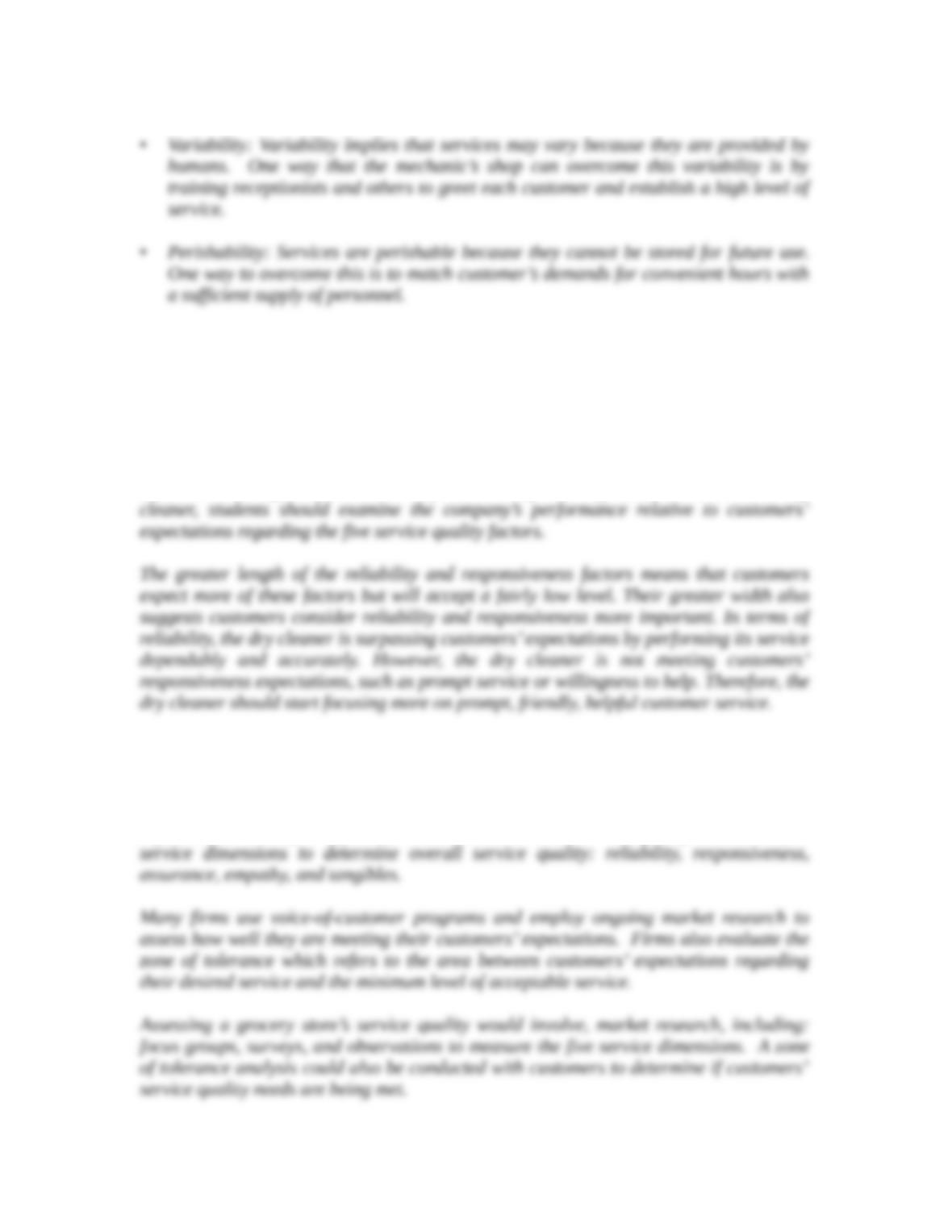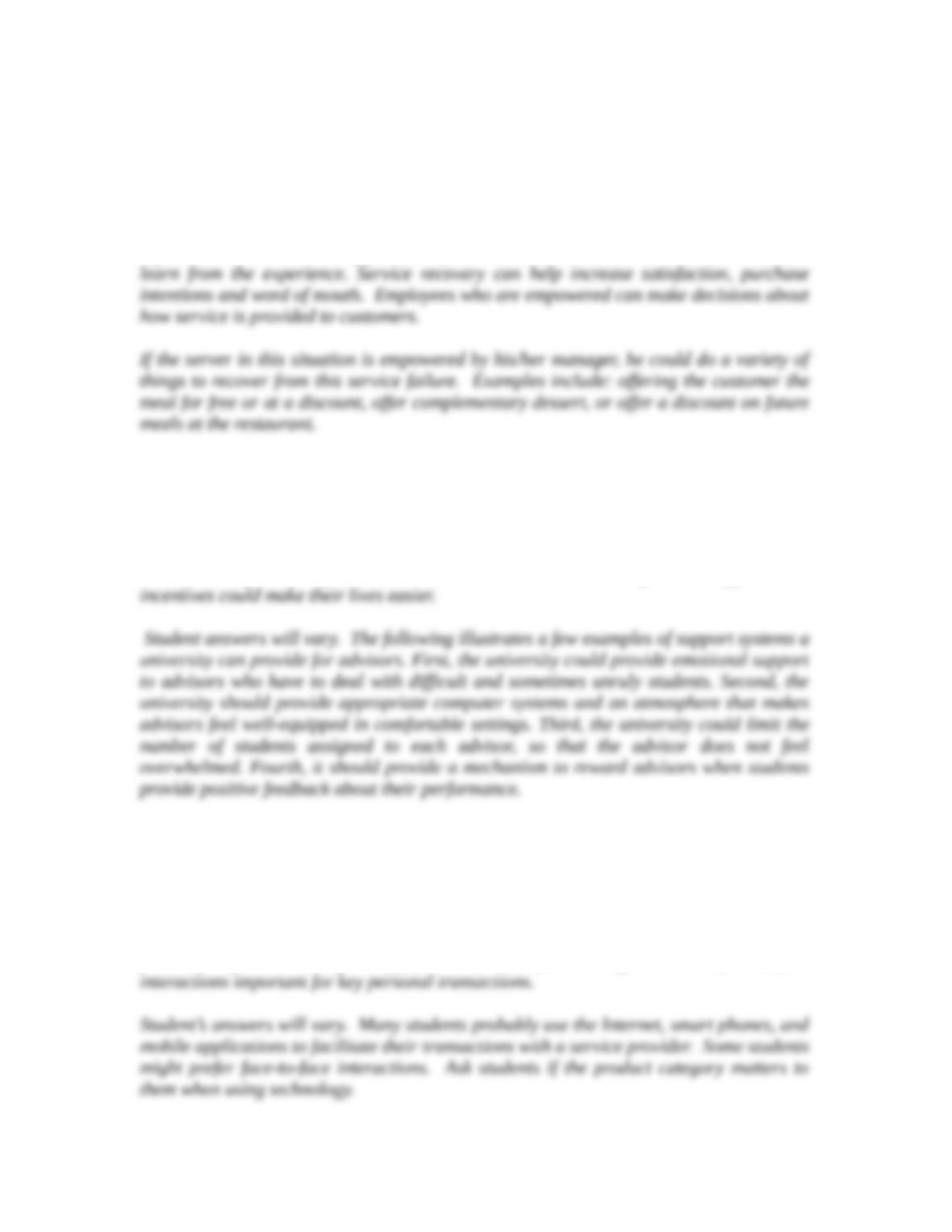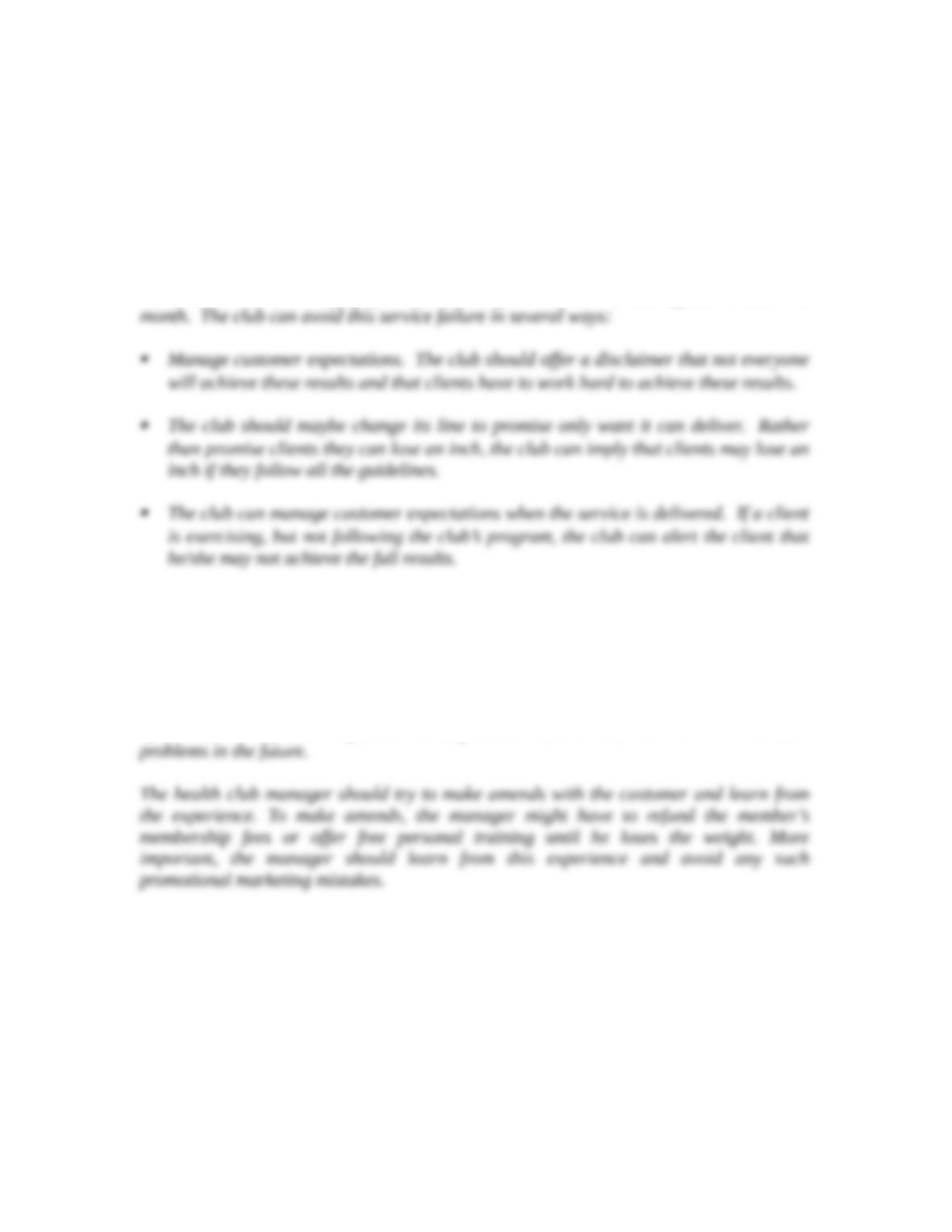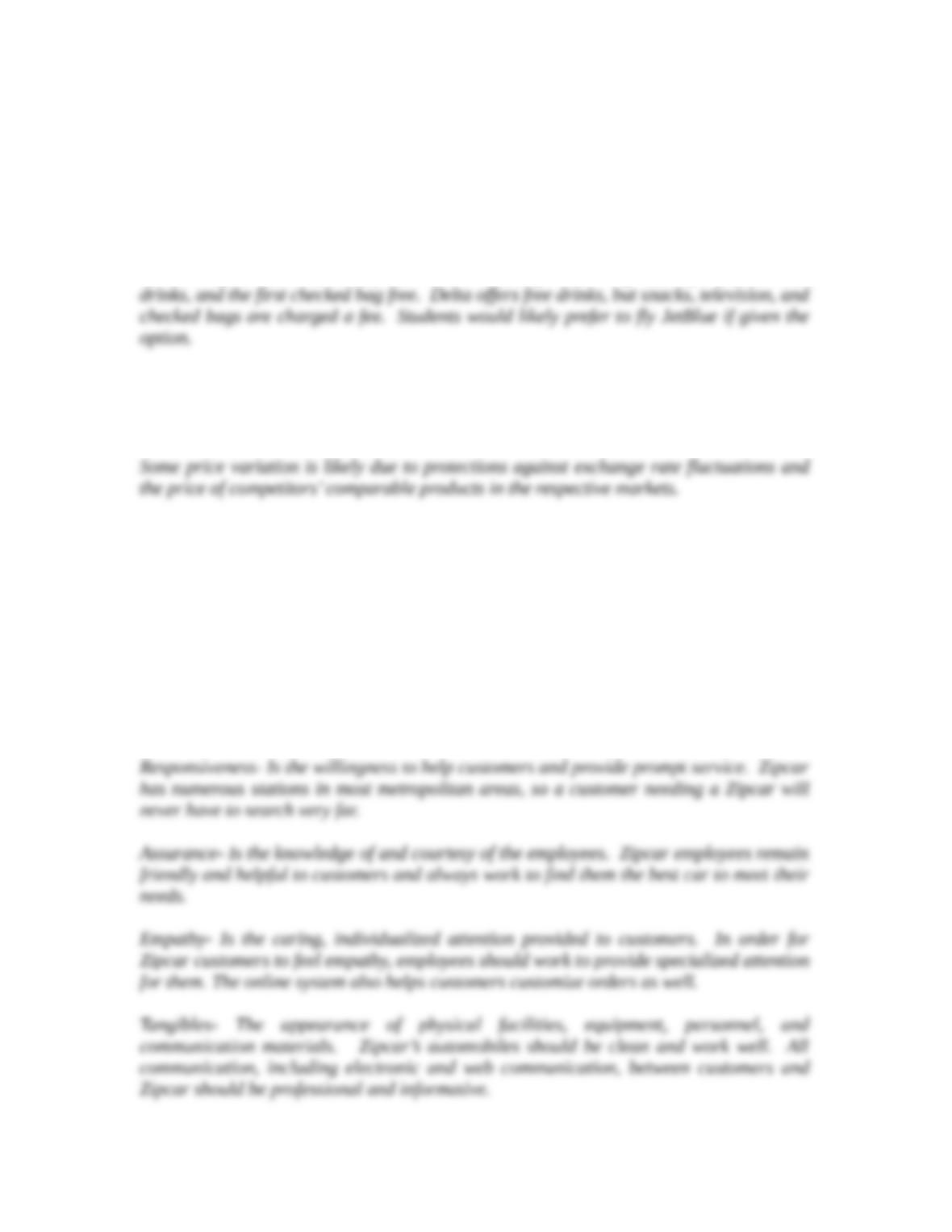Chapter 13 - Services: The Intangible Product Marketing 5th
12 Compare Zipcar’s service quality performance with that of the most recent car rental
service (e.g., Avis, Hertz) that you may have used.
This may apply only to students who have rented a car through both Zipcar and a
competing car rental service. Other car rentals like Avis and Hertz lack the convenience
13 How well has Zipcar handled service failure situations? What could it do to improve
recovery efforts?
The case provides an example of a customer who was trying to use Zipcar, but the car he
rented was not where it was supposed to be. Zipcar told the customer to take a cab and
Additional Teaching Tips
In this chapter, students learn the difference between marketing a product vs. marketing a
service. Students find that since a service can’t be “seen” or measured with a quantifiable
outcome, that the marketing strategy must be different in marketing services. The
building blocks of service quality is the foundation of the chapter which then dovetails
into how to improve customer service through the methods to reduce delivery gaps.
The Ritz Carlton case study is an excellent exercise for this chapter and is strongly
recommended to allow students to apply the five service quality areas. A good way to do
this is to divide the class into 4 or 5 groups and have them tackle the case. Then open
classroom discussion by dialogue in comparing/contrasting the responses from each of
the groups. Of course, a good understanding of the five service qualities is needed
before assigning the case. One good way to do this after discussion/lecture on the topic is
to divide the class into groups. Have each group develop a role play skit on (1) good
customer service incorporating the five service quality areas and also to prepare an
alternate skit on (2) bad customer service.
Students have fun with the skit exercise and it often brings out some humorous acting
moments. Instructors will want to assign different topics (popular food chain, hotel,
college book store, retail chain, etc.) to each group to get them focused on the skit and not
thinking up “what” to complete the skit on. Each group presents the “good” skit first in
which the audience (the rest of the class) takes notes and discussion takes place on how
© 2015 by McGraw-Hill Education. This is proprietary material solely for authorized instructor use. Not authorized for sale or distribution
in any manner. This document may not be copied, scanned, duplicated, forwarded, distributed, or posted on a website, in whole or part. 7
